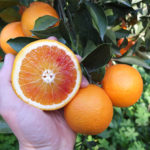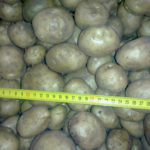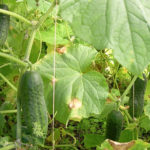Growing feijoa from seeds
Feijoa is an evergreen shrub or tree, up to three meters high, belonging to the Myrtle family. The plant got its name in honor of its discoverer, the naturalist Joao da Silva Feijo from Brazil. There are three plant forms: with a compact crown, with a spreading crown and small leaves, and a form with larger leaves.
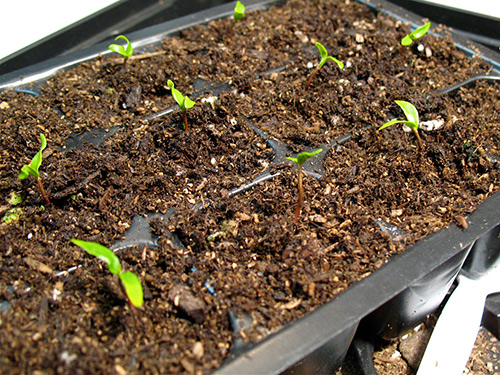
The root system of the plant is superficial, well branched, but compact. Feijoa is undemanding to soils: it grows well both on podzolic and heavy humus and gravelly soils. But sandy loamy coastal soils suit him better than others. The only thing that the plant cannot stand is an excess of lime.
The climate of the feijoa homeland is humid, subtropical. In terms of frost resistance, the plant is similar to tangerine. Active vegetation lasts from April to November. The plant is quite hygrophilous, so a good harvest can be expected only by combining watering and mulching.
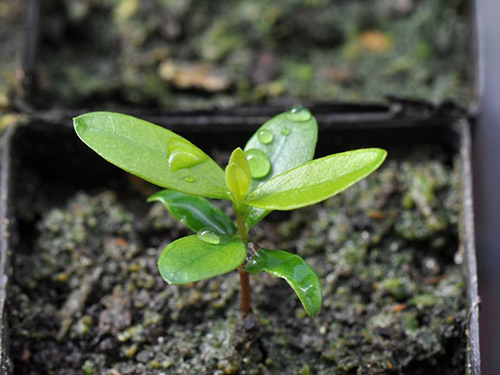
Feijoa flowers are bisexual, with a large number of stamens. Flowering begins in May and lasts for three weeks. The plant requires cross-pollination to produce fruit. Its fruit is a large and juicy berry, when ripe, it tastes like pineapple and strawberry, has a delicate strawberry-pineapple aroma. The plant has edible not only fruits, but also delicate flower petals - they are fleshy and sweet. Tearing off the petals does not impair fruit setting.
A unique feature of berries is the presence of iodine compounds in them. This makes them especially useful for people with thyroid-related conditions.
One of the biological features of feijoa is the natural shedding of already ripe fruits. They are still crumbling down hard, finally ripening only after a few days, becoming soft and fragrant.
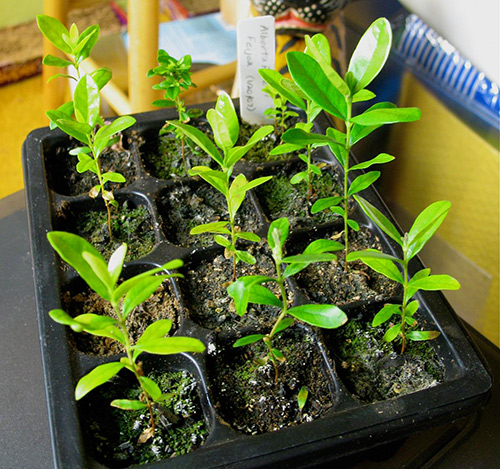
Growing feijoa from seeds
Seeds for propagation must be taken from fully ripe fruits. They are opened with a knife, taking out the central part with seeds. The seeds are very small, so the pulp is placed on a fairly dense fabric and washed in a weak solution of potassium permanganate. Then they need to dry a little at room temperature. Prior to sowing, seeds can be stored at a temperature not exceeding 5 ° C. They are sown in early spring - in February or March to a depth of half a centimeter. From above, to avoid the black leg, it is advisable to sprinkle the seeds with river sand. The soil for sowing should consist of one part of fertile sod land and one part of sand. The pots are covered with glass or polyethylene and kept at a temperature not exceeding 25 ° C. To prevent the soil from drying out, it must be periodically sprayed with water. The first shoots appear in about 20 days.

In the year of planting, feijoa must be transplanted twice: first, at the stage of four pairs of leaves, then - when moving to a permanent place. It is necessary to add humus to the composition of the soil - one part for the same amount of sod land and sand. It is better to water with acidified water, since the plant does not tolerate excess lime. In the year of planting, the plants almost do not branch, so they must be pinched.
Feijoa can be grown not only in the garden, but also as an indoor crop. Like all myrtle, it deodorizes the air well. Young leaves, if rubbed, smell very nice. Grown from seeds, feijoa begins to bloom in the fifth or sixth year, but even without flowers it is very decorative.
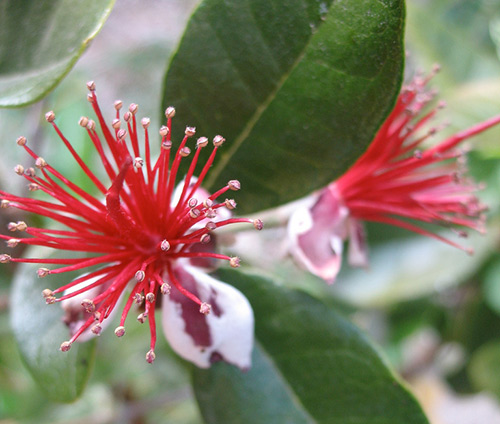
To turn a plant into a compact tree, it must be cut by about a third as soon as it grows to 30 cm. If this is not done, it will continue to stretch upward. The next pruning is done after the side branches appear.
The first five years before the beginning of flowering, the feijoa must be transplanted every year, increasing the volume of the pot and trying not to disturb the earthy ball. In the future, the bush can be replanted once every three years, making a partial replacement of the soil. Since feijoa is a cross-pollinated crop, it is advisable to have two plants at once and pollinate them manually. Or grow varieties that do not require additional pollination: Nikitskaya aromatic, Superba, Crimean early or Coolidge. For better fertilization, it is advisable to spray the flowers with water.
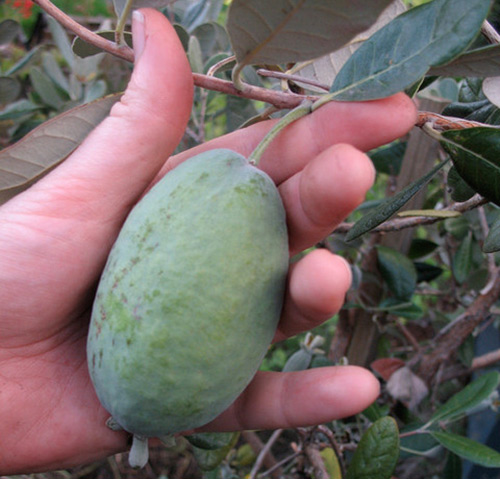
Feijoa is very light-requiring. If the indoor feijoa suddenly begins to shed its leaves, then this is most likely not a disease, but a lack of lighting at high temperatures and low air humidity. Therefore, plants are best placed on a window facing south or southeast. Daylight hours are required at least 12 hours. If this cannot be done, then you have to supplement the lighting of the plants. If the plants are kept in winter at a temperature of no more than 6 ° C, then additional lighting is not required. Already in May, pots with feijoa grown from seeds can be placed in the open air, being removed indoors at night.
Feijoa grows quickly enough, forming abundant root shoots, which is quite suitable for reproduction. It can be easily planted to present to friends or acquaintances.


